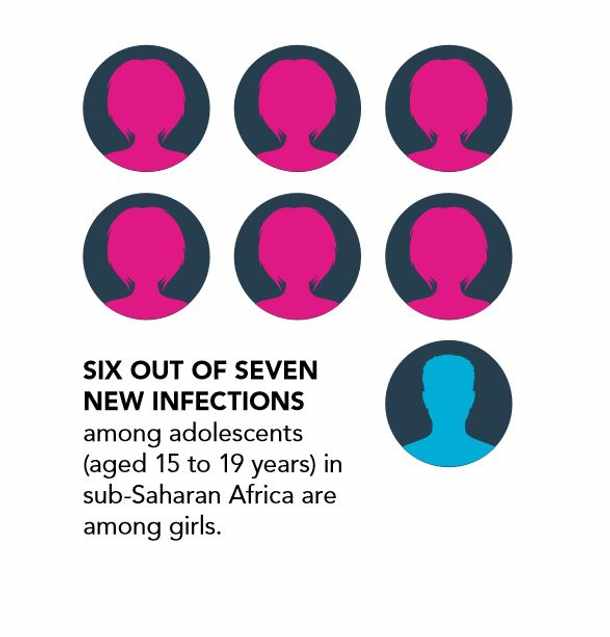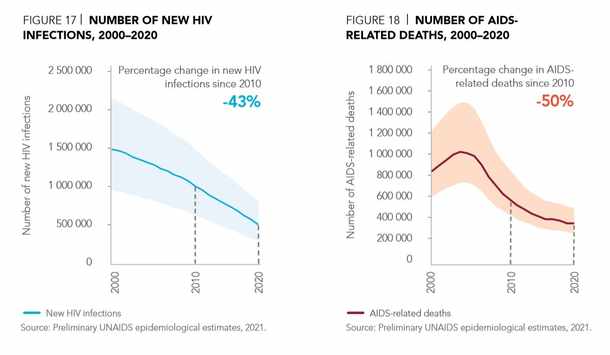The goal to end Aids by 2030 could be achievable according to the latest United Nations Aids (UNAIDS) report, and while many countries have taken great strides to end their HIV epidemics, some countries and entire regions may have stalled their progress.
A total of 38 million people are currently living with the virus to date. In Eastern and Southern Africa, there are 20.6 million people living with HIV, but only 16 million people are currently accessing treatment.
Southern Africa has the heaviest burden of HIV according to the report and the most vulnerable groups are often the most affected by recurrent crises, facing increased poverty, food insecurity and vulnerability to HIV.
Young women in sub-Saharan Africa continue to be the most affected by the virus, as six out of seven new HIV infections among adolescents aged 15–19 years in the region are among girls. Aids-related illnesses are the leading cause of death among women in this age group.

June marks four decades since the first cases of Aids were documented and to mark the milestone, the United Nations General Assembly High-Level Meeting on AIDS was held in New York and virtually this week.
A South African organisation, Mothers2Mothers (M2m), attended the high-level meeting and said it advocated world leaders to make sure that they turn the declaration into action so that the goal of ending Aids by 2030 can be achieved.
M2m, which was founded in Cape Town two decades ago, trains and employs women living with HIV as frontline health workers across ten African nations.
President and CEO of the organisation, Frank Beadle de Palomo, said that the UNAIDS report shows that progress to end Aids in children has stalled.
“For the first time in over a decade, we’re seeing a slight rise in new HIV infections in children in sub-Saharan Africa. 130 000 new infections were reported among children in 2020, a slight rise on the 126,000 new infections reported in 2019.
These concerning new data provide evidence that progress to ensure a new generation starts life HIV-free has stalled, perhaps due to service interruptions due to Covid-19,” he said.

In 2016, world leaders gathered at the UN General Assembly and set ambitious targets for 2020, with the aim of ending Aids by 2030, as called for in the Sustainable Development Goals.
Now, five years later, the 2020 UNAIDS report has shared some promising statistics that could suggest targets to end Aids by 2030 could be achievable.
Here are some of the positive statistics taken from the report:
* Globally, there were 690 000 deaths from Aids-related causes, a decline of 55% from 2001 to 2020.
* In 2020, around 84% of people living with HIV knew their status and 73% were accessing antiretroviral therapy.
* In Eastern and Southern Africa, the number of new HIV infections dropped by 43% and the number of Aids-related deaths fell by 50% in the last decade.
* Among the 37.6 million people living with HIV globally in 2020, an estimated 27.4 million people were on treatment — a number that has more than tripled since 2010.
* The report revealed that the global roll-out of HIV treatment has averted an estimated 16.2 million Aids-related deaths since 2001.
The UNAIDS report shows that countries with the best outcomes against HIV are those with progressive laws and strong and inclusive health systems.
In those countries, people living with HIV/Aids are more likely to have access to supplies of HIV treatment, testing, pre-exposure prophylaxis, quality follow-up and care.
Executive Director of UNAIDS, Winnie Byanyima, said high-performing countries have reversed their epidemics and saved lives by having adequate funding, genuine community engagement, and multi-sectoral approaches.
The same inequality-busting approaches needed to end Aids will also help the world overcome Covid-19, be ready to tackle future pandemics “support inclusive economic growth, social stability, the human rights of all. We will all do better,” she said.
There are three bold shifts that need to be taken in order to end Aids, said Byanyima, they are to end inequalities in access to health technologies, access to essential services, and to end the inequalities in the realisation of rights, particularly for people living with and affected by HIV.
“We cannot be neutral on inequalities. To get back on track in confronting Aids, we must be deliberate on confronting them,” she said.
HIV remains a pandemic driven by inequalities and Covid-19 may have amplified many of these inequalities, according to the UNAIDS report. The people being left behind are those subjected to gender inequalities, ostracisation and criminalisation.
“Gender inequalities and gender-based violence restrict the rights of women and adolescent girls, including their ability to refuse unwanted sex or negotiate safer sex, and to access HIV and sexual and reproductive health services,” read the report.
African News Agency